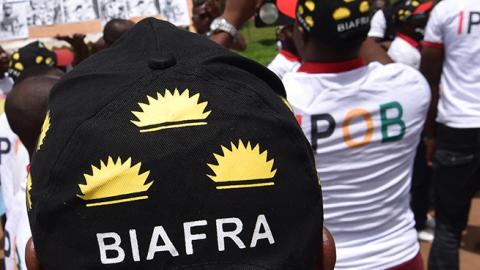Secession is back on the front pages, and that isn’t good news. Activists are talking about setting up new states in Catalonia, Kurdistan, Scotland and even Biafra—the predominantly Igbo-speaking region in southeastern Nigeria whose attempted secession led to a bloody civil war from 1967-70.
Not all secessions are alike. The movements in Catalonia and Scotland are taking place within cohesive and consolidated democracies in a peaceful part of the world. Since the European Union and the North Atlantic Treaty Organization provide a strong institutional framework, secessionist groups can hope to have it both ways. They think they can enjoy all the benefits and trappings of home rule without losing the prosperity, influence and security that citizens of large, powerful states enjoy. Much of Europe today has become a place where small nations can flourish.
What is going on in Kurdistan, Biafra, the Baluchistan region of Pakistan and Iran, and other areas of the postcolonial world is very different—and presents more challenges to world peace. The relatively demure secession movements of Europe depend on strong institutions, respected constitutional arrangements, and resilient civil societies. Much of the postcolonial world is not so abundantly blessed.
Worse, colonial boundaries often do not reflect ethnic, tribal, religious or even geographical realities. The borders of Iraq, Nigeria and many other states were drawn by colonial powers without much regard for the wishes or needs of the locals. Partly as a consequence, many of the postcolonial states that took shape in these countries have oscillated between tyranny and fecklessness, with corruption the only constant.
Imperialism and the racism that accompanied it still shape our discourse; many African “tribes” are larger than some European “nations” and have just as much linguistic and cultural heritage in common. There are approximately 34 million Igbo compared with seven million Bulgarians, six million Danes, and two million Slovenes.
Nevertheless, a wave of secession movements in the developing world would be a geopolitical and humanitarian nightmare. South Sudan, Rwanda, Syria and Myanmar show what can result when ethnic and religious identity politics erupt in full force. As a result, with some rare exceptions (Eritrea, East Timor, South Sudan and Bangladesh) the world has looked askance at independence and secession movements in postcolonial countries.
Western elites have fondly hoped that modernization—understood as economic development and the spread of democracy—would cause identity politics and ethno-nationalist grievances to fade. Yet the history of Europe from the Napoleonic Wars through the aftermath of World War I is the story of movements for national liberation that grew more powerful as economic and social development spread. The rising middle classes powered nationalist movements across Europe.
The multinational and multi-confessional federations and empires of Europe and the Middle East were pulled apart by the centrifugal forces of modernization. Genocidal slaughters, ethnic cleansing and mass floods of refugees became common as these conflicts erupted in the 19th and early 20th centuries. They flared again late in the 1990s as the Soviet Union and Yugoslavia imploded. Now, as economic and social development transform much of the postcolonial world, we are witnessing new movements of ethnic and religious identity politics as dangerous as anything Europe saw in the past.
Bitter conflicts of dissolution can turn particularly violent, threatening the peace of the wider world, when the ambitions of rival great powers align with different factions. The Balkans became the “tinderbox” of Europe a century ago not only because various small nationalities wanted to pursue feuds, but because great powers like Russia and Austria intervened to turn Serbian irredentism into a world war.
What’s worrying today is that the surge in secessionist movements and identity politics in the postcolonial world coincides with rising competition between the great powers. In Syria, Yemen and Iraq we already see how great-power rivalries can inflame local quarrels, as outside powers aligned with Sunni, Shiite Kurdish and other factions airdrop in the resources and weapons that escalate limited conflicts and allow them to endure.
Rising great-power competition intersecting with a world-wide surge in identity politics—the combination does not point toward a calm future. At the end of the Cold War, many in the West looked forward to a “posthistorical” era in which conflict would be rare. Those predictions look increasingly forlorn; America must learn to chart its course in a grimmer and less forgiving world.


















